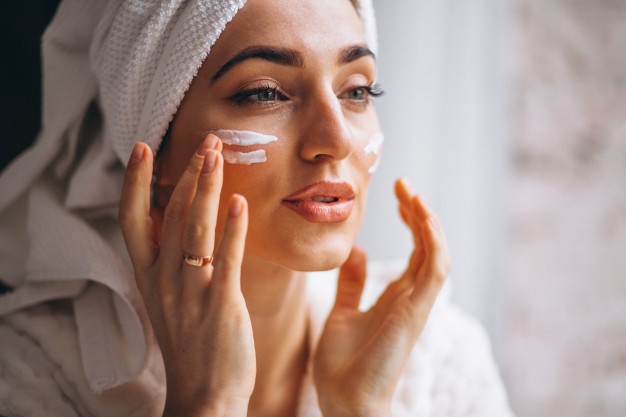While hyaluronic acid may be having its moment as the ‘it’ skincare ingredient for hydrated, plump skin, it’s not the first go-to ingredient for hydration. Before the popularization of hyaluronic acid, glycerin was the go-to hydrating ingredient in the world of skincare. So let’s talk all about how beneficial glycerin is, and its differences and similarities to hyaluronic acid.
What is Hyaluronic Acid?
Hyaluronic acid (HA) is a clear, gooey substance that is naturally produced by your body, and is the main component of what gives your skin structure which makes it responsible for that youthful plump and hydrated look. It functions as a humectant and can bind up to 1000 times its weight in water! In other words, it is a substance that holds water molecules onto the surface of your skin to keep it nice and hydrated.
Some dermatologists may also inject hyaluronic acid directly into your skin to smooth wrinkles and generally hydrate and rejuvenate your skin.
What is Glycerin?
Glycerin is basically hyaluronic acid’s budget-friendly sister. Much like HA, glycerin is also a humectant, meaning it attracts and retains water to the skin. It’s low molecular weight allow it to penetrate the deeper layers of the skin.
According to a 2014 Cosmetic Ingredient Review – Glycerol was the third most frequently reported ingredient in cosmetics, other than water and fragrance. While you may not always see it advertised on the label of a bottle, you can find it pretty high up on the ingredients list of many of the trendiest beauty products. Most commonly, you’ll find the ingredient in moisturizers, but it’s also added to facial cleansers to counteract potential dryness.
Glycerin vs. Hyaluronic Acid: Which is Better?
Both are humectants—meaning they attract and retain water. However, on a molecular level, glycerin is a much smaller sized molecule so it can penetrate deeper into skin and more easily be absorbed.
Since pure glycerin is slightly tacky in texture, it’s best to avoid if you have sensitive or oily skin as it can be irritating to the skin. Whereas hyaluronic acid is gentle and non-irritating, which makes it highly suitable for all skin types.
How to Use Glycerin and Hyaluronic Acid Together
If your skin ranges between normal to dry, combining both, glycerin and HA, into your skincare is the most effective approach. To make them work together, start applying hyaluronic acid serum first on cleansed face, and then apply glycerin based moisturizer to achieve that healthy, natural glow.
Shop Related Products
